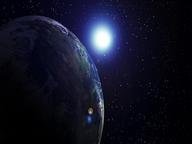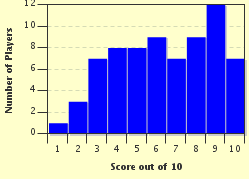Quiz Answer Key and Fun Facts
1. What was the name of the main competing theory about the origin of the cosmos before the 'Big Bang Theory' was generally accepted as the most plausible?
2. Before the 'Big Bang' there was nothing. Everything, even space and time, came into existence with the 'Big Bang'.
3. According to the 'Big Bang Theory', approximately how long ago did our universe start as an infinitely small, hot, dense point?
4. Ever since the 'Big Bang', the universe has been expanding. But at what rate is this expansion?
5. As the universe expands, its temperature does which of these?
6. 'The Big Bang' created nearly equal amounts of matter and antimatter. How long before all the antimatter was wiped out?
7. The first stable elements didn't appear until a few hundred thousand years after the 'Big Bang'. What elements were they?
8. Through his observations in the 1920s Edwin Hubble observed a phenomenon called 'redshift', from which he deduced the universe was expanding. What is 'redshift'?
9. Cosmic microwave background radiation was discovered by accident in 1964. This background radiation is left over from which of these?
10. The "Big Bang" started the universe that we know today. Which of the following is NOT one of the theories of how it will end?
Source: Author
stredman
This quiz was reviewed by FunTrivia editor
rossian before going online.
Any errors found in FunTrivia content are routinely corrected through our feedback system.


